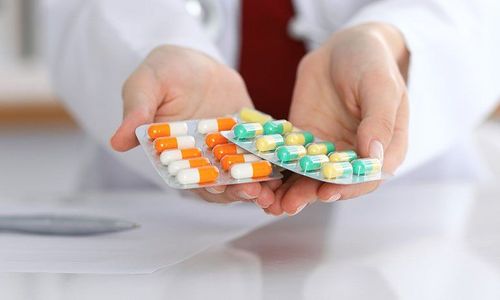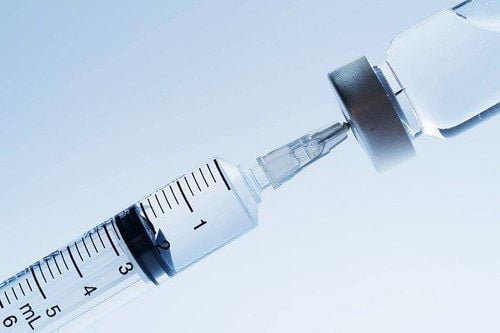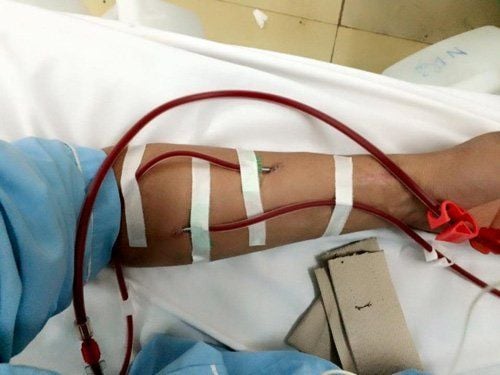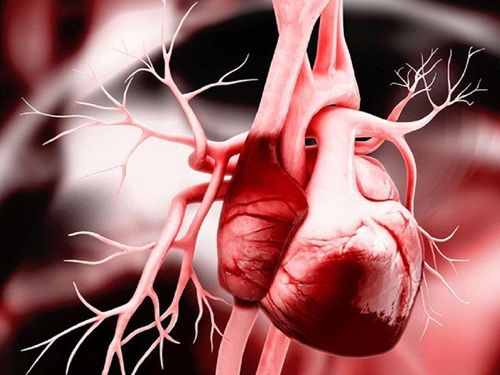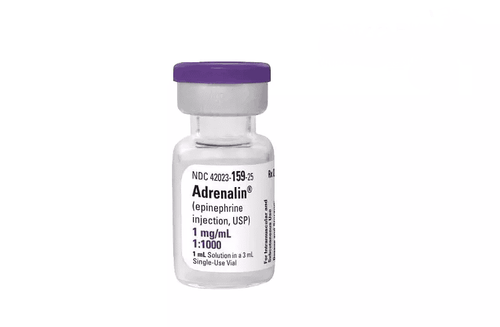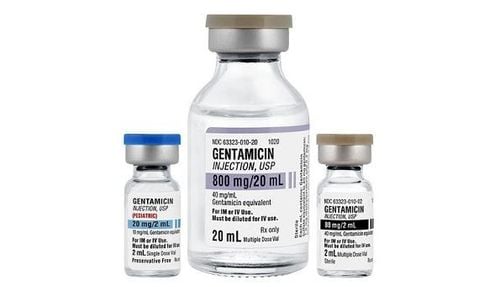This is an automatically translated article.
The article was written by Dr. Truong Ngoc Hai - Resuscitation Doctor - Emergency Department - Vinmec Central Park International General HospitalAppropriate fluid resuscitation improves tissue perfusion and improves shock. Tissue hypoperfusion due to NKH manifests as organ dysfunction and hyperlactateemia, which may be accompanied by hypotension.
1. Make a problem
The mortality rate in patients with sepsis (NKH) is still very high, about 50% [17]. Fluid resuscitation and hemodynamic stabilization in patients with sepsis, especially in patients with shock, are the cornerstones of treatment, with an important role in the pathophysiology of septic shock [53].Patients with septic shock are often hypovolemic due to many causes such as diarrhea, vomiting and unrecognized water loss due to fever, dehydration through breathing. In addition, intravascular water may migrate into the extravascular space as a result of increased vascular permeability. Direct measurement of fluid loss is not feasible. Hypoalbuminemia can be used to measure protein loss and suggest increased vascular permeability, but it is also not a routine clinical tool [31]. Hemoconcentration may be an indirect marker of fluid redistribution. However, we cannot know how much of the fluid redistributes. Therefore, two controversial issues of fluid resuscitation in septic shock are how much fluid should be resuscitated, how to monitor adequate fluid resuscitation, and what type of fluid should be used.
Recommendations for Early Goal Directed Therapy (EGDT) in NKH recommend a series of resuscitation goals including central venous pressure, central venous oxygen saturation, and urine volume. and mean blood pressure [41]. EGDT is controversial because recent studies have not shown a dramatic reduction in mortality as seen in the first study by Rivers et al. The Surviving Sepsis Campaign (SSC) recommends starting fluid resuscitation with 30 ml/Kg of crystalloid in the first 3 hours.
This fixed volume of resuscitation fluid allows clinicians to quickly initiate resuscitation, while exploiting patient information and awaiting more accurate means of hemodynamic assessment. Although there is not much literature to support this volume of fluid, recent intervention studies have applied this volume in the early stages of resuscitation [28], [29]. Evidence from initial observational studies also supports the use of this volume. The average volume of fluid used in the PROCESS and ARISE trials was close to 30 ml/Kg, and close to 2 L in the PROMISE trial.
Table 1.1. Methods to predict fluid response
| Phương pháp | Ngưỡng cắt | Giới hạn |
| PPV/SVV | 12% | Không thể sử dụng trong trường hợp thở tự nhiên, rối loạn nhịp tim, Vt máy thở thấp |
| Thử thách tăng Vt | 3,5% (PPV) | Không thể sử dụng trong thở tự nhiên, rối loạn nhịp tim |
| Thay đổi dIVC | 2,5% (SVV) | Không thể sử dụng trong thở tự nhiên, Vt thấp |
| 12% | ||
| Thay đổi dSVC | 36% | Cần sử dụng doppler qua thực quản, không thể sử dụng trong trường hợp thở tự nhiên, Vt thấp |
| Nâng chân thụ động | 10% | Cần phải đo cung lượng tim |
| Nghiệm pháp ngưng thở cuối thì thở ra | 5% | Bệnh nhân phải đặt NKQ, bệnh nhân phải ngưng thở 15s |
| Nghiệm pháp ngưng thở cuối thì hít vào | 15% | Cần NKQ, bệnh nhân phải ngưng thở 15 giây |
| Nghiệm pháp truyền dịch ít 100mL | 6% | Cần phải đo cung lượng tim |
| Nghiệm pháp truyền dịch 300-500 mL | 15% | Cần phải đo cung lượng tim, khả năng gây quá tái dịch nếu lặp lại nhiều lần |
The ability to predict fluid response when CVP is within the normal range (8–12 mmHg) is very limited [10]. The same goes for static parameters that reflect right and left heart pressure or volume. When rehydrating a patient, the clinician should assess dynamic parameters. The predictive value of compensated displacement response of dynamic parameters has higher accuracy than that of static parameters [13]. However, dynamic parameters that evaluate the compensatory response are not always applicable, as most of these parameters require one or more certain conditions.
In such cases, maneuvers to increase preload to assess the patient's fluid response through monitoring for variations in cardiac output will be used. These maneuvers include: rapid infusion maneuvers or passive leg elevation maneuvers [34]. To perform these maneuvers, it is necessary to have equipment to measure stroke volume or cardiac output accurately and quickly after preload-increasing maneuvers. It is extremely difficult to disseminate these devices in developing countries (Table 1.1). While waiting for measures to assess the response to epidemics that can be widely deployed in clinical practice, we need a general recommendation for the treatment of patients with NKH.
>>> Selection of fluids in resuscitation
2. Pathophysiology of fluid overload in patients with sepsis
Fluid overload involves multiple mechanisms that may contribute to end-organ failure. In fact, several studies have demonstrated an association between venous congestion and acute kidney injury, impaired liver function, and impaired microcirculation. Laine et al [25] demonstrated in an experimental model in sheep that high CVP values reduce pulmonary lymphatic drainage (due to decreased thoracic duct drainage to the central vein). Consequences of decreased pulmonary lymphatic drainage are pulmonary edema, decreased gas exchange, adverse effects on lung mechanics, and increased work of breathing. Therefore, an increase in CVP after fluid resuscitation may be a mediator to the adverse effects of fluid overload.Increased hydrostatic pressure and increased vascular permeability lead to interstitial edema during fluid overload due to NKH. However, recent insights into glycocalyx layer function in the normal circulatory system and in shock have led to a change in understanding of this process. The endothelial glycocalyx layer (a complex network of proteoglycans and proteins attached to the side of the endothelial cell) interacts with plasma proteins to push proteins out of intercellular crevices.
In addition, besides endothelial hydrostatic pressure, it is the osmotic difference (oncotic pressure) of the plasma layer underlying the glycocalyx with the interstitial tissue that contributes largely to the Starling fluid balance, not the difference. oncotic pressure in plasma and interstitial tissue. Thus, glycocalyx integrity is a measure of normal transendothelial fluid exchange. This modified Starling model has important implications in NKH, as NKH destroys the glycocalyx layer. This is responsible for the increased vascular permeability commonly seen in inflammatory conditions [14]. Furthermore, the concentration of atrial natriuretic peptide (ANP) is increased due to increased volume and dilation of the arteries, which is thought to lead to a gradual loss of the glycocalyx layer [9]. Thus, the glycocalyx is damaged in the NKH, causing interstitial fluid leakage.
Interstitial edema not only affects lung function but also causes increased intra-abdominal pressure, progressive multi-organ failure, especially acute kidney injury, leading to more severe fluid retention. Excessive edema affects early mobility, pressure ulcers, increased volume of distribution. In addition, fluid overload affects many other organs in the body [37].
![Hình 1: Tác hại của quá tải dịch “Nguồn: O'Connor 2015” [37]](/static/uploads/medium_20210218_100014_625045_Phu_co_tim_max_1800x1800_png_8e0225c3d0.png)
Hình 1: Tác hại của quá tải dịch “Nguồn: O'Connor 2015” [37]
Please dial HOTLINE for more information or register for an appointment HERE. Download MyVinmec app to make appointments faster and to manage your bookings easily.




